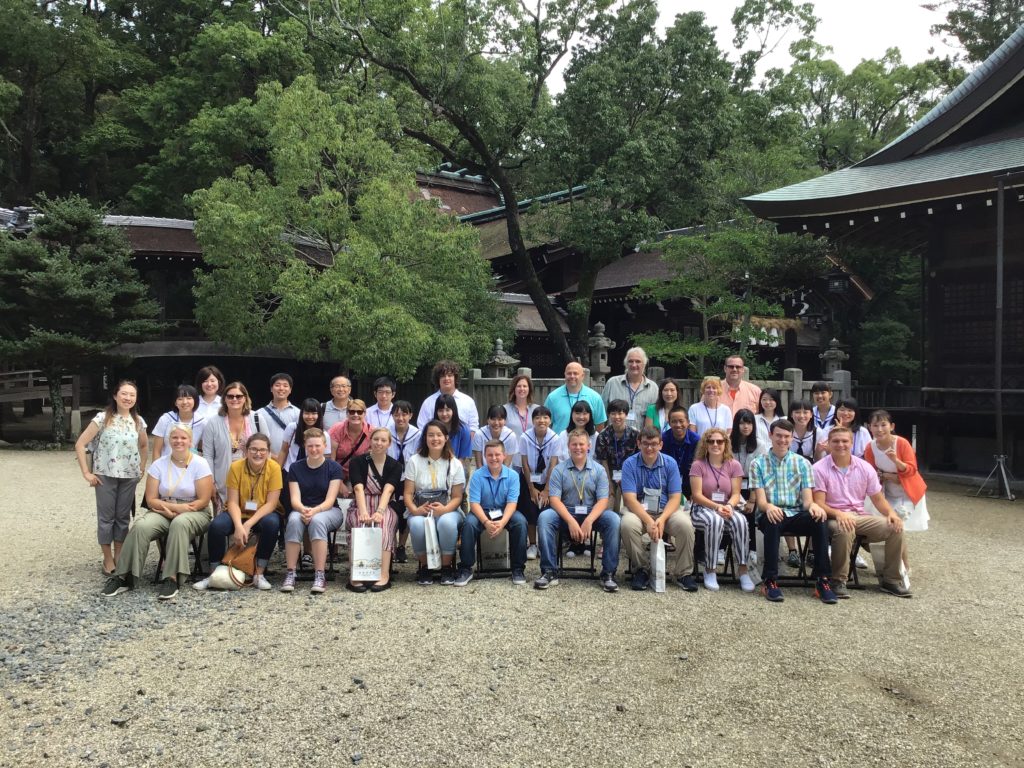-
Hyogo Prefectural Sumoto Industrial Senior High School
- Level/s of EducationUpper SecondaryRegionKinki
- Main areas of activity

| Location | 2-8-65, Uyama, Sumoto-shi, Hyogo |
|---|---|
| TEL. | (+81)799-22-1240 |
| Website | http://www.hyogo-c.ed.jp/~sumoto-ihs/ |
| Membership | 2017 |
2024 Annual Report
Oceans, Environment
Our school, guided by its ethos of “Health and Integrity,” strives to foster the capacity to shape the future, in line with the UNESCO School goals of promoting sustainable development and sustainable lifestyles. We have been focusing primarily on environmental and marine issues, encouraging students to take the lead in planning and collaborating with the local community as they work toward creating a better future.
First, regarding the Three Straits Clean-Up Campaign, our students once again played a leading role this year, just as they did last year. On October 26, we broadened our circle by inviting neighboring high schools to join us as staff members, thereby boosting the number of young participants. At the Kitan Strait venue—one of the three main sites—our high school students were in charge of event planning and management, underscoring the idea of “making litter-picking fun.” Specifically, we split participants into five teams for a “Sandy Shore G1 Grand Prix 2025,” a competitive cleanup where collected debris was transformed into art by adding stickers and decorations. We also invited everyone to write their thoughts and hopes for the environment on sticky notes, which we then arranged into a large-scale mosaic piece. By offering a fun twist to an otherwise routine activity, we managed to draw over 200 attendees, including local residents and students from various schools. Many participants noted that this creative approach allowed them to view marine trash from a new perspective.
Next, in the Wood Luck Project, we focus on the issue of wildlife damage that naturally arises on Awaji Island, where nature abounds. This year, our objective was to increase the number of people connected to rural communities. During the “Retro Street Walk” event on November 10, we expanded our project. In collaboration with a local furniture store, we had timber from the Yagi-Umakai community (cut down to prevent wildlife intrusion) processed and then used our school’s laser cutter to brand custom coasters for sale. We also held a workshop for local elementary school students, just as we did the previous year, in order to connect the community and the elementary school more closely. This initiative offered children firsthand opportunities to learn about timber and wildlife-related problems, thus fostering early awareness and encouraging stronger ties between the younger generation and the region.
Lastly, our Kaguya Project—also known as “The Tale of the Bamboo Cutter: Solving Neglected Bamboo Forests Through Creativity”—has built upon what students learned last year in class about the challenges of unattended bamboo groves. Seeking to address these issues through hands-on methods, we previously showcased four approaches—“play,” “art,” “food,” and “fuel”—and demonstrated them at our school festival and local events through bamboo roller coasters, bamboo lanterns, bamboo-fueled cooking, and charcoal production. This year, we have reinforced these initiatives by incorporating more collaborative events with other schools and further utilizing social media to raise awareness about the problem of overgrown bamboo. Students also organized experiences in which participants cut the bamboo themselves and experimented with “Bamboo Tamago-Mushimushi,” a dish involving tea custard steamed inside a bamboo tube. Through these efforts, an increasing number of local residents and other high-school students—who previously knew little about the bamboo issue—have begun to take interest. We have witnessed new bonds forming among young people, who see this cause as something they can tackle together.
Through these three main projects, our students have honed their individual roles and developed valuable abilities such as taking initiative, collaborating in teams, and effectively communicating. Local residents have applauded the active presence of young people, highlighting that it is “reassuring to see the next generation lead with so much enthusiasm.” Compared to last year, we have broadened our activities by bringing in new partners and supportive participants, which has considerably expanded our outreach.
Annual Work Plan
Looking ahead, we aim to continue and enhance these projects while exploring innovative ways to collaborate with other high schools inside and outside the island, as well as with local companies for joint product development. Our plan is to deepen the educational value tied to UNESCO Schools by nurturing the knowledge and skills required to realize a sustainable society, all while working closer with the local community. In addition to environmental and marine initiatives, we hope to apply the expertise we have gained to other domains of study, further reinforcing our vision of “fostering the power to create the future.” We remain committed to uniting faculty, local residents, and students to embody the principles of UNESCO Schools in new and forward-looking ways.
No related reports available in English.
